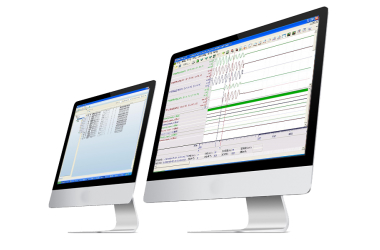HOME PRODUCTS Protection,Automation & Control Disturbance Fault Recording
-
SERVICES
 NEWS
NEWS  EVENT CALENDOR
EVENT CALENDOR  CONTACT US
CONTACT US 
-
PCS-9013 DFR Management System
The Disturbance Fault Recording Management System (DFRMS) is designed to manage various Disturbance & Fault Recorders(DFRs) across the entire power system. It provides real-time monitoring and waveform analysis based on the information collected from each DFR. Operators in local substations are capable of modifying settings, viewing alarm information and analyzing waveforms. Brief information is available for retrieving on request. Short message (SMS) and Email reminding functions are integrated into this management system.
The DFR Management System can be configured at the customers’ request in a centralized or decentralized architecture. It can operate in regional and wide area networks under IEC 61850 protocol, FTP and IEC 60870-5-103 based on LAN. Up to 1500 sets of DFRs can be integrated and managed with this system.
The DFRMS is composed of a master station human-machine interface(MHMI) and a local station human-machine interface(LHMI). Functions of MHMI and LHMI mainly include:

- Local station human-machine interface(LHMI) Master station human-machine interface (MHMI)
-
Parameters configuration: all parameters of DR in local substations can be configured and uploaded to devices;
Alarming: it checks the fault report, events and waveforms received from DRs
Analysis function: DFR-MS can call waveform files and perform analysis using dedicated analysis tool;
Remote control: the management system supports remote control, remote time synchronization and remote reset.
Parameters configuration: all parameters of DR in the whole system can be configured and uploaded to devices;
Document management: operators can search and call waveform files according to waveform list;
State monitoring: it can monitor network status and check measured data to learn the operating conditions of DR;
Setting management: DFR-MS can modify settings of any DR within the scope of control;
Remote control: it supports remote control, remote time synchronization and remote reset.
Alarm processing: it provides real-time monitoring of received events and fault reports, and sends post-processing to DR via emails and short messages;
Waveform analysis: it provides waveform analysis using dedicated analysis tools;
WEB inquiry: operators can inquire DR parameters and waveform files through the Internet. All information can be downloaded to a local PC for further analysis.